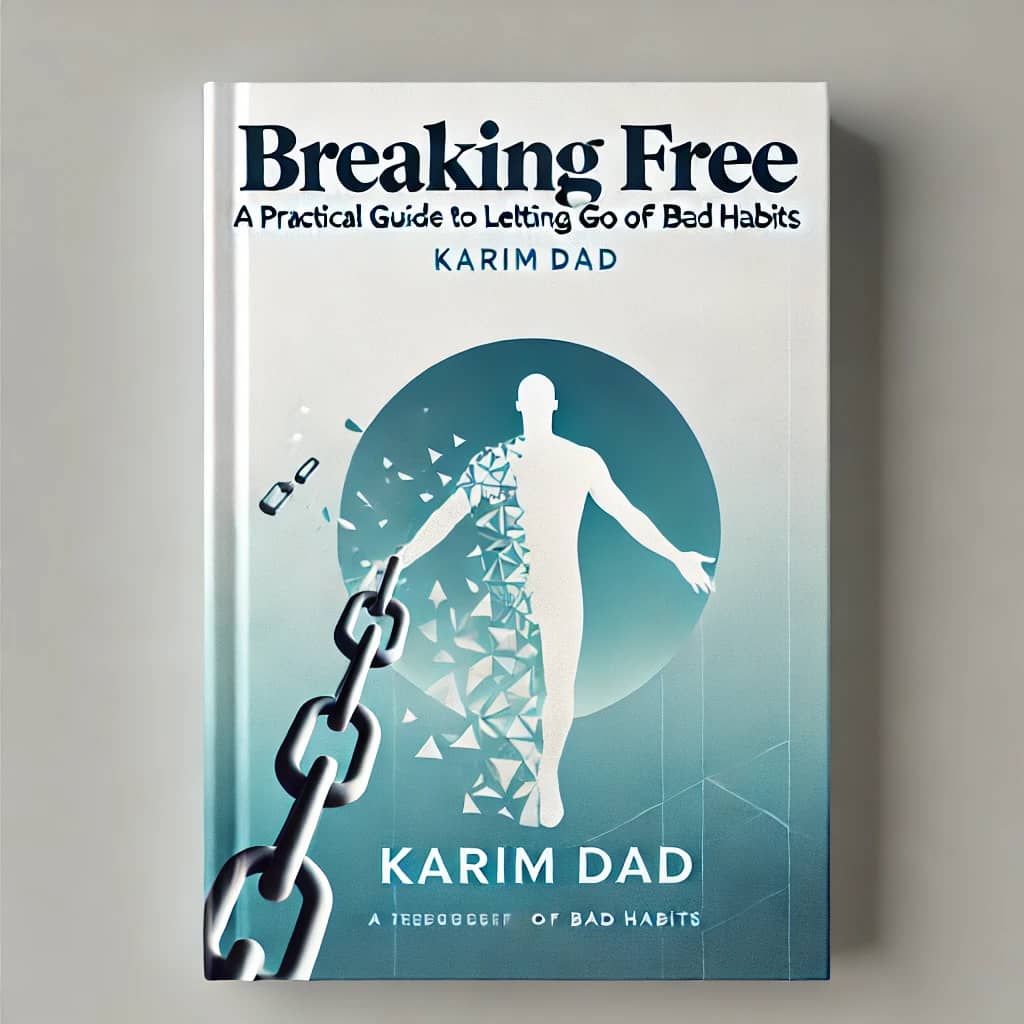
By Karim Dad
Introduction: Understanding Habits
Habits shape our lives more than we realize. From the moment we wake up to the time we go to sleep, our actions are guided by patterns we’ve formed over time. Some of these habits propel us toward success, while others keep us tethered to behaviors that hold us back.
What Are Habits?
Habits are repeated actions triggered by specific cues and reinforced by rewards. These behaviors, once formed, often operate on autopilot, requiring little conscious thought. They are the brain’s way of conserving energy.
The Science Behind Habit Formation
According to research, habits are formed through a psychological pattern called the habit loop, which consists of three parts: cue, routine, and reward. The cue triggers the habit, the routine is the behavior itself, and the reward reinforces the behavior, ensuring its repetition.
The Role of the Brain in Habit Loops
Neuroscientists have identified the basal ganglia as the brain region responsible for habit formation. This part of the brain helps encode repetitive tasks, freeing up mental resources for more complex activities.
Why Breaking Bad Habits Is Crucial for Growth
Bad habits can hinder personal growth, damage relationships, and negatively impact health. Breaking free from them allows us to unlock our potential, embrace positive change, and live a life aligned with our values.
Chapter 1: Identifying Your Bad Habits
Self-Awareness: The Key to Change
Change begins with awareness. It’s impossible to alter what you can’t see. Self-awareness involves observing your daily routines and recognizing the patterns that no longer serve you.
Common Bad Habits and Their Consequences
Some habits, such as procrastination, overeating, or excessive screen time, might seem harmless initially but can lead to severe consequences over time, including stress, poor health, and reduced productivity.
Reflecting on Your Triggers
Habits don’t exist in isolation; they are often triggered by specific events, emotions, or environments. For example, boredom may lead to mindless snacking, or stress might result in smoking. Identifying these triggers is crucial for breaking the cycle.
The Power of Journaling to Recognize Patterns
Journaling is a powerful tool for self-reflection. By documenting your thoughts, feelings, and behaviors, you can uncover patterns and gain insights into the triggers behind your habits.
Chapter 2: The Psychology of Change
Understanding Willpower and Motivation
Willpower is like a muscle that can be strengthened over time. Motivation, on the other hand, acts as the spark that ignites change. Together, they form the foundation for breaking bad habits.
The Role of Emotions in Habit Formation
Emotions play a significant role in shaping our habits. Negative emotions often drive bad habits, while positive reinforcement strengthens good ones. Learning to manage emotions can disrupt harmful patterns.
How to Rewire Your Mindset for Success
A growth mindset is essential for change. Instead of viewing bad habits as unchangeable, see them as challenges you can overcome through effort and perseverance.
Chapter 3: Setting Clear Goals
The Importance of Specific, Measurable Goals
Vague goals like “I want to stop procrastinating” are less effective than specific ones like “I will spend 30 minutes each morning organizing my tasks.” Clear goals provide direction and focus.
Visualization Techniques for Success
Visualizing yourself as free from bad habits can create a powerful mental image that motivates change. Picture the benefits of breaking a habit and how it will transform your life.
How to Align Your Goals with Your Values
When your goals align with your core values, they become more meaningful. For instance, if health is a priority, quitting smoking becomes not just a goal but a necessity for living according to your values.
Chapter 4: Practical Strategies to Break Bad Habits
The Replacement Method: Swapping Bad Habits with Good Ones
Instead of simply trying to eliminate a habit, replace it with a healthier alternative. For example, replace scrolling on your phone with reading or meditating.
The 21-Day Rule: Myth or Reality?
While popular, the idea that it takes 21 days to form or break a habit isn’t entirely accurate. Research shows it can take anywhere from 18 to 254 days, depending on the habit and individual.
Building a System of Accountability
Accountability can significantly boost your chances of success. Share your goals with a friend, family member, or mentor who can keep you on track.
Environmental Triggers and How to Manage Them
Your environment plays a significant role in shaping habits. Modify your surroundings to eliminate cues that trigger bad habits and introduce ones that encourage positive behaviors.
Chapter 5: Building a Support System
How Friends and Family Can Help
A strong support system can provide encouragement, motivation, and guidance. Share your journey with loved ones and ask for their help in holding you accountable.
Finding a Mentor or Accountability Partner
A mentor or accountability partner can offer valuable insights and keep you focused on your goals. They serve as a constant reminder of your commitment to change.
Joining Support Groups
Support groups create a sense of community and shared purpose. Whether it’s a local group or an online forum, connecting with others facing similar challenges can be incredibly empowering.
Chapter 6: Dealing with Relapses
Understanding That Relapses Are Part of the Process
Relapses are a natural part of the journey toward change. Instead of viewing them as failures, see them as opportunities to learn and grow.
How to Bounce Back After a Setback
After a relapse, assess what went wrong, identify your triggers, and create a plan to avoid similar situations in the future.
Cultivating Resilience
Resilience is the ability to bounce back from setbacks. Strengthen your resilience by focusing on your progress, not your failures.
Chapter 7: The Role of Mindfulness
How Mindfulness Helps in Breaking Habits
Mindfulness involves being fully present and aware of your actions. It can help you pause before reacting to triggers, giving you the space to choose a healthier response.
Meditation Techniques for Self-Control
Simple meditation practices, like focusing on your breath, can enhance self-control and reduce impulsive behavior.
The Importance of Being Present
Living in the moment allows you to break free from automatic behaviors and make conscious decisions.
Chapter 8: Long-Term Strategies for Success
Creating a Habit-Free Vision for Your Life
Imagine a life free from bad habits. This vision can serve as a powerful motivator, keeping you focused on your goals.
Maintaining Motivation Over Time
Motivation can wane over time. Keep it alive by regularly reminding yourself of the benefits of breaking bad habits and celebrating your progress.
Celebrating Small Wins
Every step forward is a victory. Celebrate small milestones to stay motivated and build momentum.
Conclusion: Your Journey to Freedom
Breaking bad habits is a journey, not a destination. Along the way, you’ll discover strengths you didn’t know you had and develop resilience that will serve you for a lifetime. Embrace the process, stay committed, and inspire others by sharing your success.
About the Author
Karim Dad is passionate about helping individuals break free from limiting patterns and achieve their full potential. With years of experience as a motivational advisor and writer, he provides practical strategies and deep insights for personal growth. Can Through his writing, Karim inspires readers to take charge of their lives and create lasting change.

